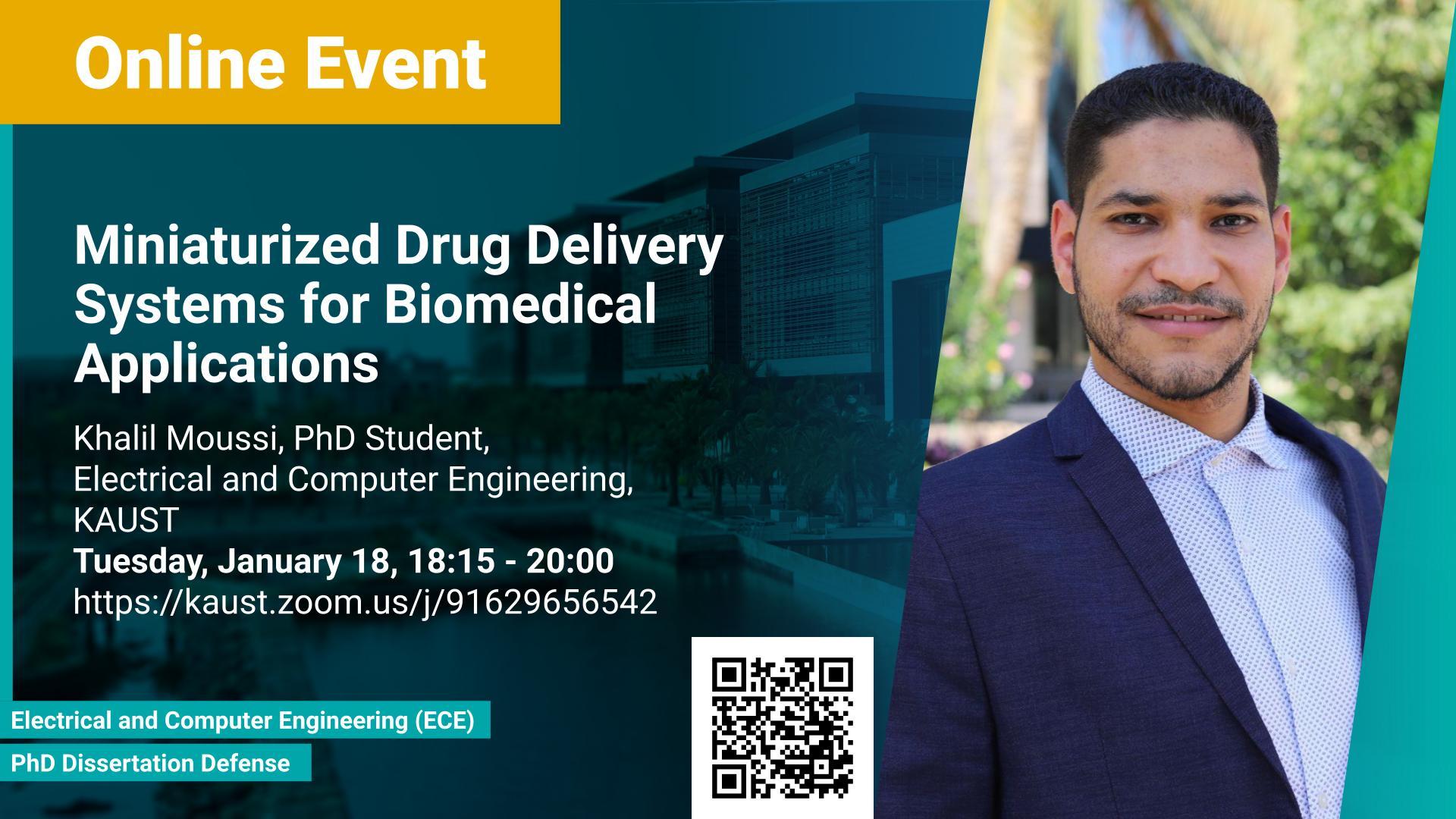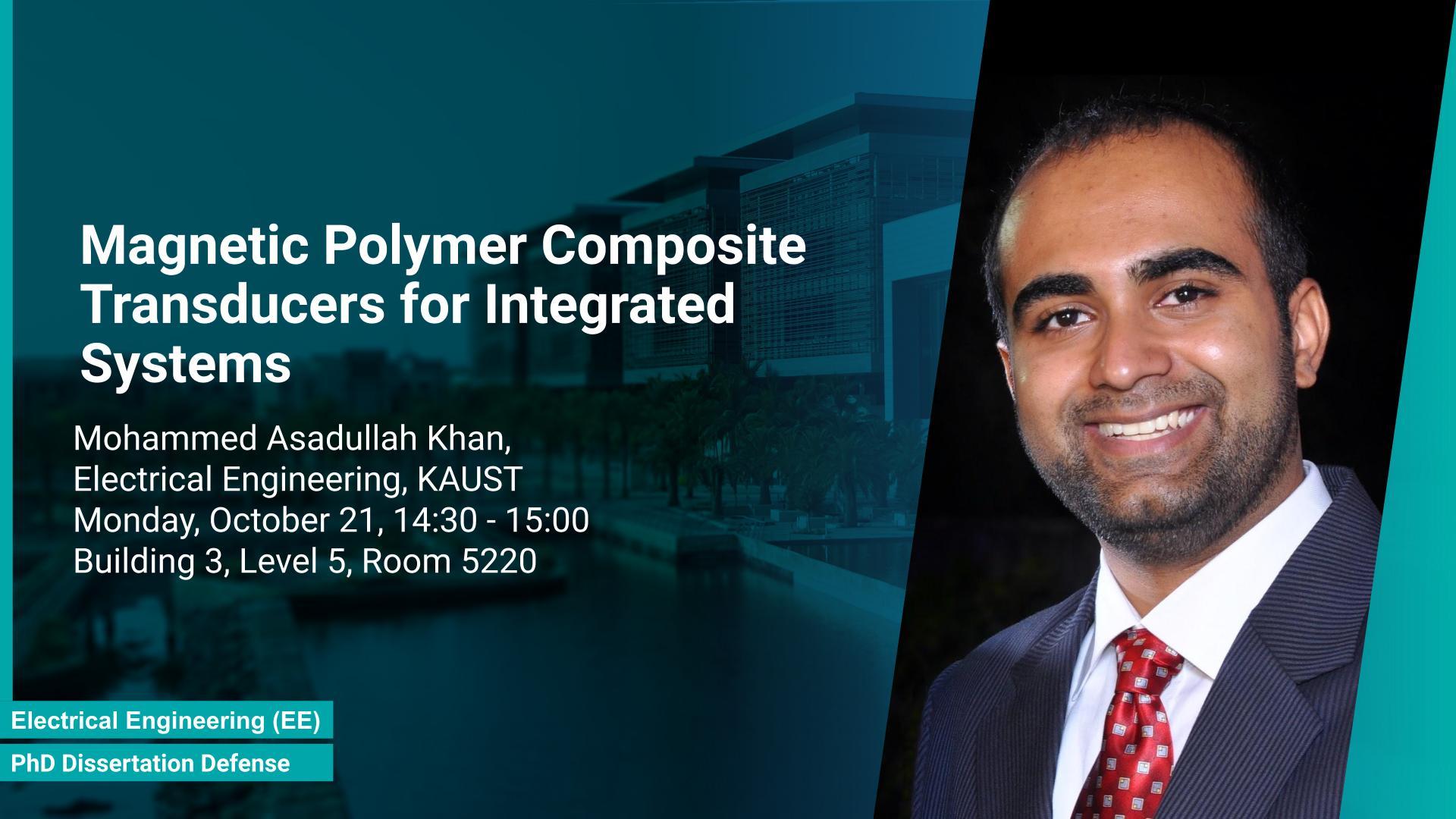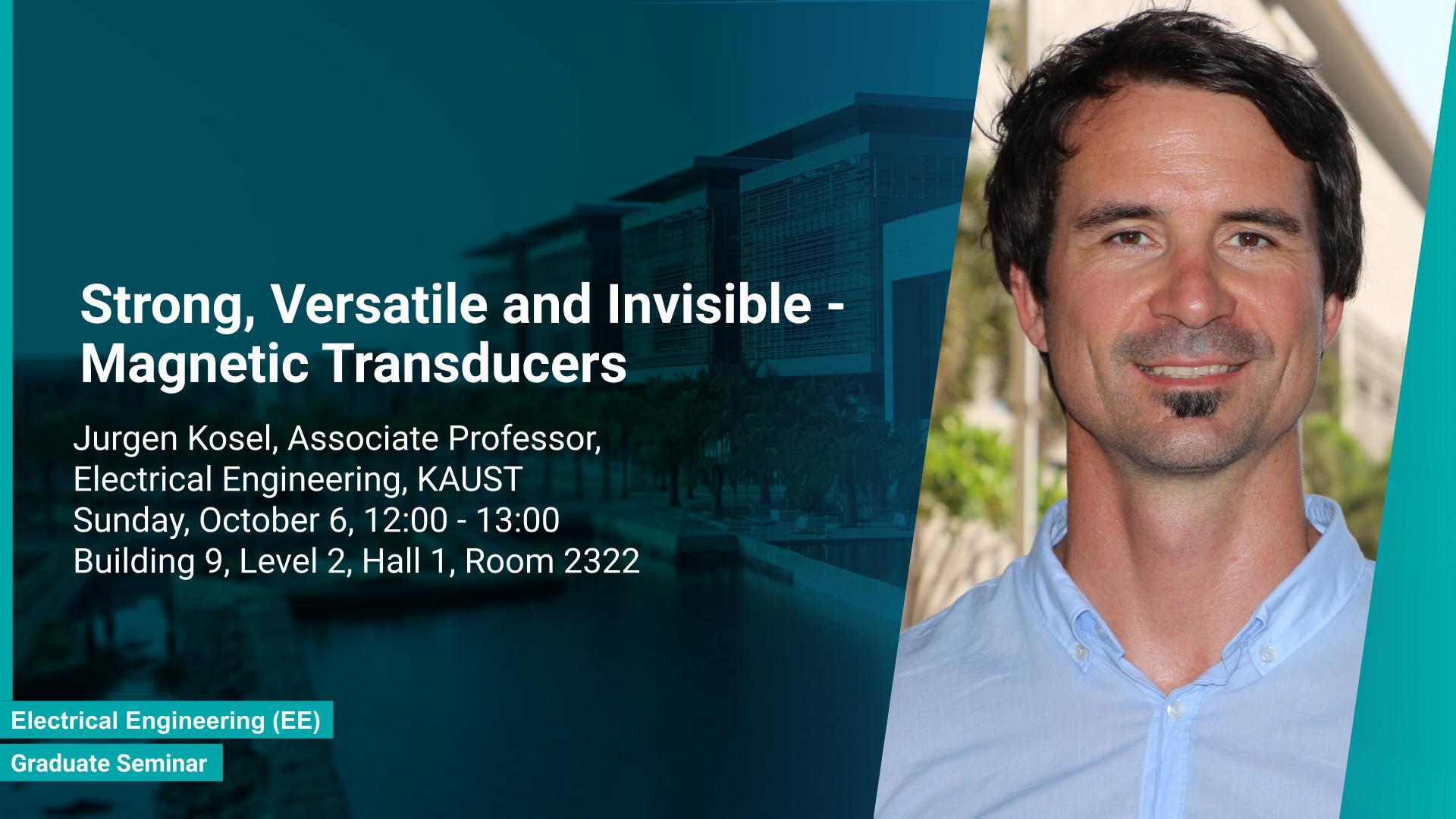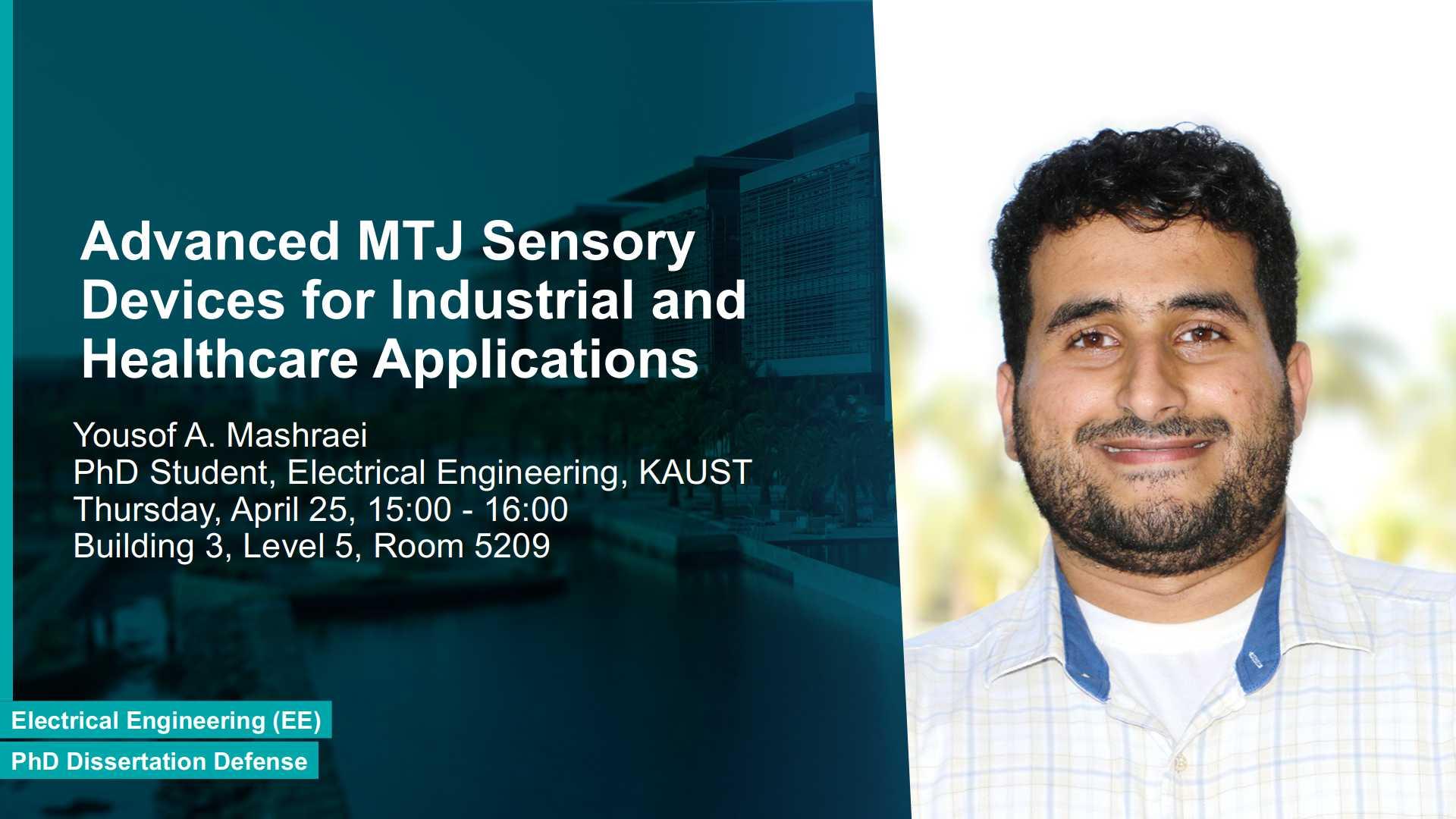PhD Student,
Electrical and Computer Engineering
Monday, March 28, 2022, 13:00
- 15:00
KAUST
Contact Person
This dissertation introduces flexible, lightweight, and robust Laser-Scribed Graphene (LSG) sensor solutions for detecting various physical parameters, such as strain, flow, deflection, force, pressure, temperature, conductivity, and magnetic field. Multifunctionality was obtained by exploiting the direct laser scribing process combined with the flexible nature of polyimide and the piezoresistivity of porous graphene. The outstanding properties of LSG, such as low cytotoxicity, biocompatibility, corrosion resistance, and ability to function under extreme pressure and temperature conditions, allowed targeting diverse emerging applications.





